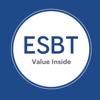ESG a value proposition
Mr. Nguyen Hoang Nam, Assurance Partner & ESG Leader at PwC Vietnam, tells VnEconomy about the capacity of local businesses to embrace ESG matters.

What do you think about the readiness of businesses in Vietnam for the ESG (environmental, social, and governance) journey?
The PwC ESG Readiness Survey released on October 26 found that Vietnamese businesses are very much committed to ESG. Eighty per cent of respondents said their company has made ESG commitments or plans to do so in the next few years.
Businesses in Vietnam recognize the value of implementing an ESG program. In the survey, 66 per cent of respondents confirmed they have built an ESG program, with 22 per cent saying they have a comprehensive program covering all three aspects.
However, most businesses in Vietnam are only just starting out on their ESG journey. They have yet to fully leverage senior leadership to drive their ESG commitments. Another major barrier is data. Most companies lack an understanding of the necessary data required for reporting.
Besides data, what other challenges do Vietnamese businesses face regarding ESG?
There are a few key challenges for Vietnamese businesses, and these also tend to be challenges for businesses around the world.
The PwC ESG Readiness Survey report identifies several challenges for Vietnamese business on their ESG journey, including:
- Lack of knowledge (61 per cent). Vietnam is not alone in this. According to a recent PwC survey, global peers also identified confusion over ESG standards and regulations as one of the major challenges hindering their ESG reporting.
- Financial capability (48 per cent).
- Company size (46 per cent).
- Lack of transparent ESG data (28 per cent).
What should Vietnam’s policy makers do to encourage enterprises to implement effective ESG measures?
As there is no “one size fits all” solution, with the insights gleaned from the PwC ESG Readiness Survey report, the following recommendations are worth considering in order to encourage enterprises to practice ESG as far as possible:
- Without a strong governance structure, companies could fall short in achieving their ESG goals. There are strong calls for more guidance and policies on ESG. Clear guidelines, a holistic country roadmap, and a level playing field for industries are needed for businesses in Vietnam to advance their ESG strategies.
- While the government has made progress in developing green energy, environmental protection, and corporate governance, and in addressing social issues, more can be done. For instance, many are waiting for Vietnam’s regulatory and policy makers to offer clarity around the country’s green finance rules and target areas. The government should develop a variety of detailed ESG reporting metrics for transparency.
- The government should offer some incentives to encourage the community to become actively involved in ESG, such as urging banks and issuers to scale up green loans and to issue more green loans and green bonds, provide low-cost funding for low carbon projects, and reduce the cost of green loans. It can also use tax incentives and other fiscal policy measures to change the relative cost of sustainable and unsustainable activities and thereby induce market responses to achieve ESG objectives.
- The government should conduct feasibility studies on carbon pricing and carbon tax and emissions trading schemes; set out a careful consideration of the design and implementation of green initiatives; educate people on the impact of their lifestyle choices, encouraging them to move towards more sustainable consumption and behavior; and inform the community to secure more ethical investments. It also needs to ensure that the policies, programs, and initiatives being touted are well-supported both financially and institutionally.
What should enterprises in Vietnam do to integrate ESG and sustainability into development strategies?
At the enterprise level, the ESG journey probably starts with the board. As management teams look to improve the long-term value of the company, they need a strategic plan that takes advantage of market opportunities and addresses material risks in ESG. In its oversight role, the board is responsible for ensuring that the company’s strategy is appropriate and will deliver results, and for overseeing associated material risks.
When setting the development strategy, enterprises should also develop an ESG strategy. When carrying out the ESG strategy, key performance indicators (KPIs) and targets to measure and evaluate ESG performance must be determined, and sufficient resources and financial support prepared. Business processes should be standardized, so that ESG objectives can be fully integrated.
What do you think about ESG trends in Vietnam?
ESG is not something totally new. With the current global mega issues surrounding ESG and Vietnam’s strong commitments to reaching net-zero emissions by 2050, we expect ESG trends to become more and more vibrant in the years to come, taking into account both risks and opportunities along the way. On the funding side, they also align with the rise of green finance. The Vietnam Green Taxonomy is also being developed to catch worldwide financial sources.
Enterprises are currently paying more attention to developing ESG strategies and ESG reporting to meet the requirements of other stakeholders, such as lenders and shareholders. Under pressure from stakeholders to have transparent reporting, many enterprises are also looking for assurance on ESG reporting by professionals




















